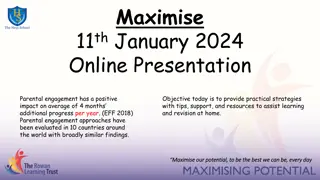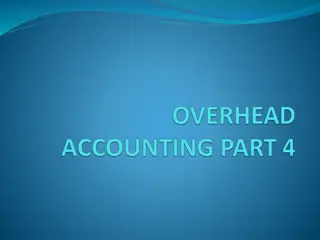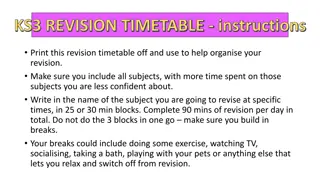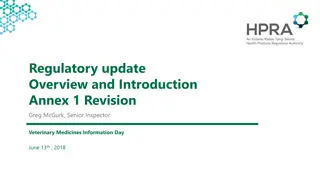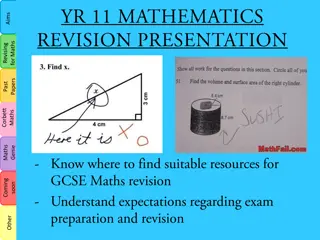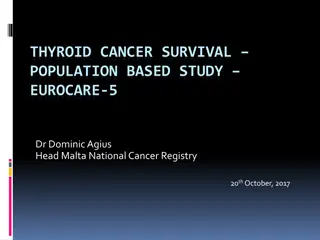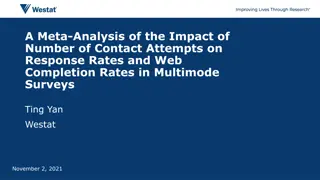
Chemical Reaction Rates and Factors: Explained
Explore the Rates of Reaction and Collision Theory in chemical reactions. Learn how factors like temperature, concentration, and particle size affect the rate of reactions. Understand the concepts of activation energy, exothermic, and endothermic reactions through detailed explanations and diagrams.
Uploaded on | 0 Views
Download Presentation

Please find below an Image/Link to download the presentation.
The content on the website is provided AS IS for your information and personal use only. It may not be sold, licensed, or shared on other websites without obtaining consent from the author. If you encounter any issues during the download, it is possible that the publisher has removed the file from their server.
You are allowed to download the files provided on this website for personal or commercial use, subject to the condition that they are used lawfully. All files are the property of their respective owners.
The content on the website is provided AS IS for your information and personal use only. It may not be sold, licensed, or shared on other websites without obtaining consent from the author.
E N D
Presentation Transcript
Higher Revision Slides Dr Stephen - March 2017
Unit 1 : Rates of Reaction Collision Theory For a chemical reaction to take place, particles must collide with: - Energy greater than or equal to the activation energy. - The correct collision geometry.
Unit 1 : Rates of Reaction Factors which increase the rate of reaction are: Increase Temperature Increase Concentration Decrease Particle Size (increase surface area) Use of a catalyst
Increase in Temperature For collisions to be successful they need to have sufficient energy. Increasing the temperature increases the energy of the particles, allowing for more successful collisions.
Increase in Temperature w_KEdiagramtop1 At lower temperatures, few particles have energy greater than EA. At higher temperatures, the curve shifts to the right. More particles now have sufficient energy for a successful collision
Increase in Concentration As you increase the number of particles in a given volume, you increase the concentration. Increasing concentration moves the particles closer together and make it more likely that they will collide. More collisions = more successful collisions = faster rate of reaction.
Decrease in Particle Size (increase in surface area) Chemical reactions happen at the surface. If a particle is broken up into smaller particles, there is more surface available to react on. The greater the surface area, the greater the number of collisions, the greater the number of successful collisions, the faster the rate.
Reaction Pathway H = products reactants. Ea Ea Enthalpy + H Enthalpy -H If H is negative, the reaction is EXOTHERMIC. If H is positive, the reaction is ENDOTHERMIC.
Activated Complex Not all collisions are successful. Particles must have sufficient energy (activation energy, EA) in order to make the ACTIVATED COMPLEX.
Use of a catalyst Catalysts allow us to LOWER THE ACTIVATION ENERGY of a reaction. By doing this, catalysts speed up a chemical reaction. Uncatalysed 75 - Catalysts are not used up in this process. 60 - Reactants Catalysed 50 - P.E. Products 25 - Reaction path



